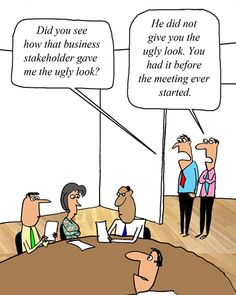Reading time: 5 minutes
 With modern technologies, workforce analytics is no longer a myth and a thing of the past. Instead, it has matured and evolved into a trend which business leaders and decision-makers should not neglect. In today's post, we look at some of the important trends of workforce analytics and its general direction.
With modern technologies, workforce analytics is no longer a myth and a thing of the past. Instead, it has matured and evolved into a trend which business leaders and decision-makers should not neglect. In today's post, we look at some of the important trends of workforce analytics and its general direction.
Trend 1: From product to people analysis
A company's success is more than just its jobs and products. The staff is the success factor of a business and the element of a great working environment. Workforce analytics is no longer just about its resources, but human factors too. Having said that, automation, artificial intelligence and bots are rendering a lot of jobs obsolete. The question here is, who is responsible for maintenance of these technologies? Hence, workforce analytics should not just focus on the job function itself, but more big data analysis on people.

Trend 2: More staff demand organizational transparency
Workforce analytics is about analyzing your staff. Staff is human-being and human-being tends to be touchy on privacy. As such, the overview of workforce analytics cannot be complete without a reference to data privacy control and act. While workforce analytics is being carried out, the solution must take into consideration several factors such as the types of data collected, how these data are being used, and the methodology behind this analysis of data. Remember, always be transparent to your staff about the collection and reading of staff data to avoid distrust issues. 
Trend 3: Workforce Analytics = Improved productivity due to improvements
In recent years, there have been a lot of emphasis on workforce productivity initiated by the Singapore Government. However, even until today, they are still struggling to define "Productivity" at a national level. This just shows how complex it can be when it comes to the topic of managing a workforce. Traditionally, companies turn to hiring additional staff to solve these issues. However, without the correct analytics, the quality of the workforce is lowered due to mismatch in skill sets to functional level.
By using workforce analytics, business leaders and decision-makers can focus on improving productivity due to its capabilities to identify top performing staff within the organization. When productivity increases, a company requires less people to deliver better results.

Trend 4: The "Me-too" effect
There is a shift in patterns of workforce management. There are now more contingent workforce and millennial entering the workforce. A lack of trust can influence many workforce analytics efforts. If the focus is primarily on efficiency and control, employees will doubt if there are any benefits for them. Overall there is a shift to more employee-centric organizations, although sometimes you can doubt how genuine the efforts are to improve the employee experience. Asking the question: “How will the employees benefit from this effort?” is a good starting point for most workforce analytics projects

Trend 5: From individual to team
Many workforce analytics projects today are still focused on individuals. Our workforce analytics focuses on the overall functions and staff productivity.

For more information about workforce analytics, visit here and arrange your free demo today with WorkforceOptimizer.



